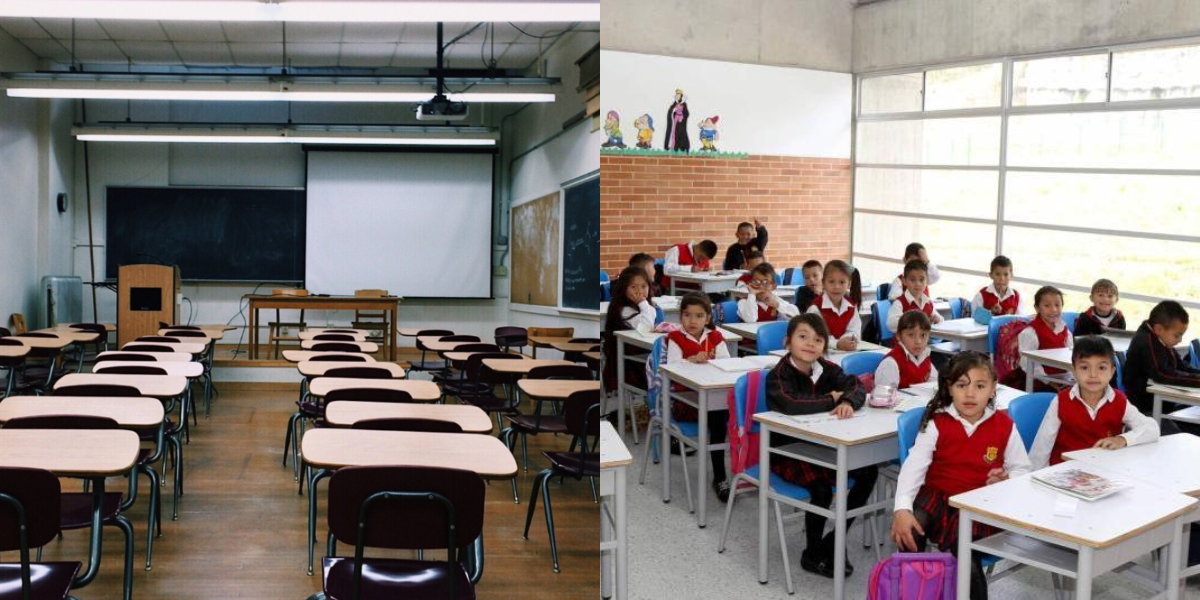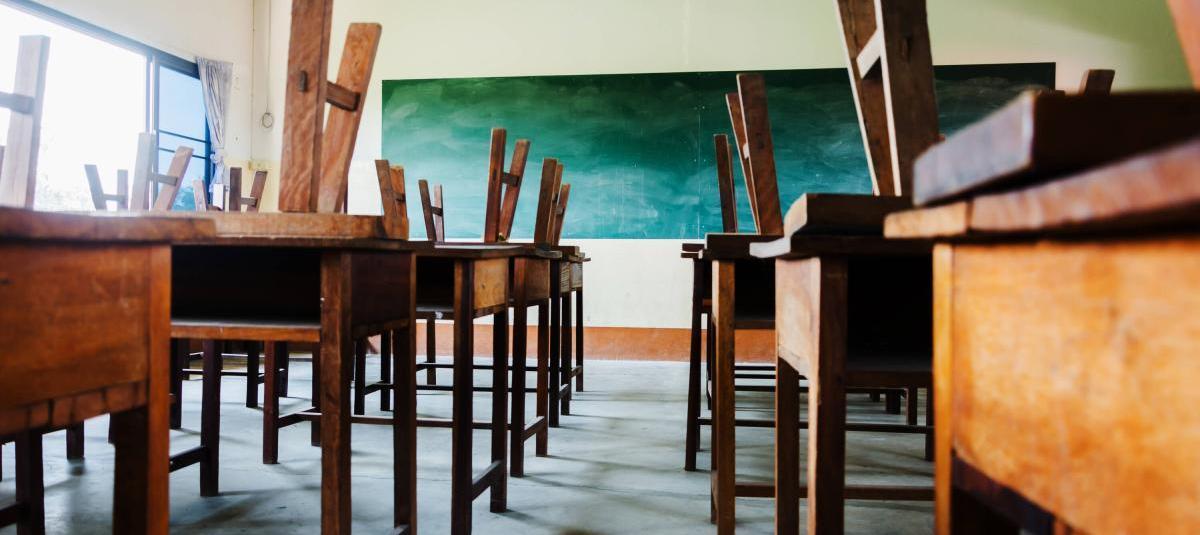Dramatic drop in school enrollment in Colombia: at least 926,000 children are not attending school, with serious effects on the sector.

In the last thirteen years, the Colombian education system has lost 1.3 million students in primary and secondary education (schools). And while at first glance this drop in enrollment can be explained by a demographic decline (fewer and fewer children are being born in Colombia), the truth is that the detailed official figures reveal a discouraging reality: The percentage of school-age children and adolescents who are not attending school today is growing.
This is evidenced by a new report by the Laboratory of Education Economics (LEE) of the Javeriana University and the Colombian Association of Universities (Ascun). It reveals that while in 2010 the number of students enrolled in the country's schools was 11.1 million, by 2023 (the latest figures released by the Ministry of Education) the enrollment rate was 9.8 million.
And while it's true that the number of births in the country has been experiencing a steady decline since 2008, which clearly implies that there are fewer and fewer school-age children and adolescents, Ministry of Education figures published in the National Basic Education Information System (Sineb) reveal that, in addition, there has been a significant drop in the system's net coverage.

Schools in Colombia Photo: iStock. EL TIEMPO
This is no minor indicator. It refers to the percentage of children and adolescents of school age (between 5 and 16 years old) who are actually studying. Thus, the country went from 92.4 percent coverage in 2015 to 90.3 percent in 2023, a drop of two percentage points.
While it may seem like a small reduction, for a country with a school population of nearly 10 million, a 2 percent reduction in coverage translates to around 200,000 students.
The situation becomes even more alarming when we consider that a total of 9.7 percent of children do not attend school, which translates to 926,074 children who are out of school. This figure is another rising number: more and more children who, due to their age, should be in school but are not studying. In 2022, the number was 806,388; in 2021, the number was estimated at 729,828; and in 2020, the number was 714,362.
For educational analyst Francisco Cajiao, this demonstrates a serious crisis in the education system: "It's understandable that enrollment is falling due to demographic issues, but the logical thing is that coverage should increase and that there should be fewer and fewer children out of school. However, what's happening is the opposite: coverage is falling and the number of children who aren't studying is increasing."
And these aren't the most worrying figures. EL TIEMPO consulted Sineb data and found that the school dropout rate in 2023 (the latest available data) was 3.7 percent, meaning that year alone, some 335,364 minors dropped out of school. If this figure is added to the 4.1 percent dropout rate in 2022 (the highest figure in more than a decade), the figure shows that 709,487 minors dropped out of school in the last two years.
And to all this, we must add an additional indicator that causes concern: grade repetition. 2023 had the highest grade repetition rate in two decades, reaching 8.1 percent, which means 725,563 students had to repeat a year.
This is clearly alarming, explains Cajiao, who maintains that "repeating a grade is the initial factor in dropping out. A child who repeats a year immediately tends to drop out." Furthermore, as Omar David Garzón, a researcher at LEE, explained to this newspaper, "in Colombia, only 4 out of 10 students who graduate from high school do so on time."

Bogotá Schools Photo: Private archive
This combination of demographic decline, falling coverage, and high school dropout rates is jeopardizing the entire Colombian education system, not just primary and secondary education.
To begin with, this phenomenon is believed to be behind the closure of 6,263 educational institutions, both public and private, in the country over the last six years. Of these, 769 are private schools that closed their doors in 2024 alone.
But the impacts would not only fall on basic and secondary education, but also on higher education (universities and technical and technological institutions). This is explained in the LEE and Ascun report: “This phenomenon represents an early warning for educational planning: the potential demand for post-secondary education will decline structurally in the coming years, requiring anticipated reforms in supply, pedagogical models, and inclusion strategies for other populations traditionally excluded from the education system. Secondary education, in this context, represents a structural crux or a focus of opportunity to address these challenges, and therefore demands priority attention.”
For Gloria Bernal, director of the LEE, it's clear that potential demand for higher education is declining: "Higher education enrollment will remain stable in the coming semesters, but our projections reveal a drop around the 2026-2021 semester, which first highlights the demographic impact, but also the coverage issues we've seen in elementary and middle school."
This is already beginning to be felt in the sector, especially at private universities, which, according to Ascun, are already experiencing stagnant enrollment and, according to his forecasts, are likely to see a decline in enrollment very soon.
But, for experts consulted by EL TIEMPO, the most worrying aspect is the social consequences of a school population that is increasingly less educated. “When a student drops out, it is very unlikely that they will return to school. According to figures from the Ministry of Education's Labor Observatory on Education, people who do not complete high school are those with the lowest incomes and formal jobs when they enter the labor market. The fact that 9.5 percent of children and adolescents are not receiving an education is a huge social tragedy.”
He added: "It's not just about the impact on individuals who don't complete their education, but also about serious effects on society as a whole: education has an impact, for example, on the country's productivity, on the reduction of multidimensional poverty rates, on the skilled workforce, and on the development of science and technology."
Cajiao, for his part, questioned the government's continued focus on higher education, despite the strength of these official figures: "It's like building a bridge without any cars. We're not guaranteeing that people will study in high school, much less ensuring that they will be able to access higher education."
MATEO CHACÓN ORDUZ | Deputy Editor, Life - Education
eltiempo





